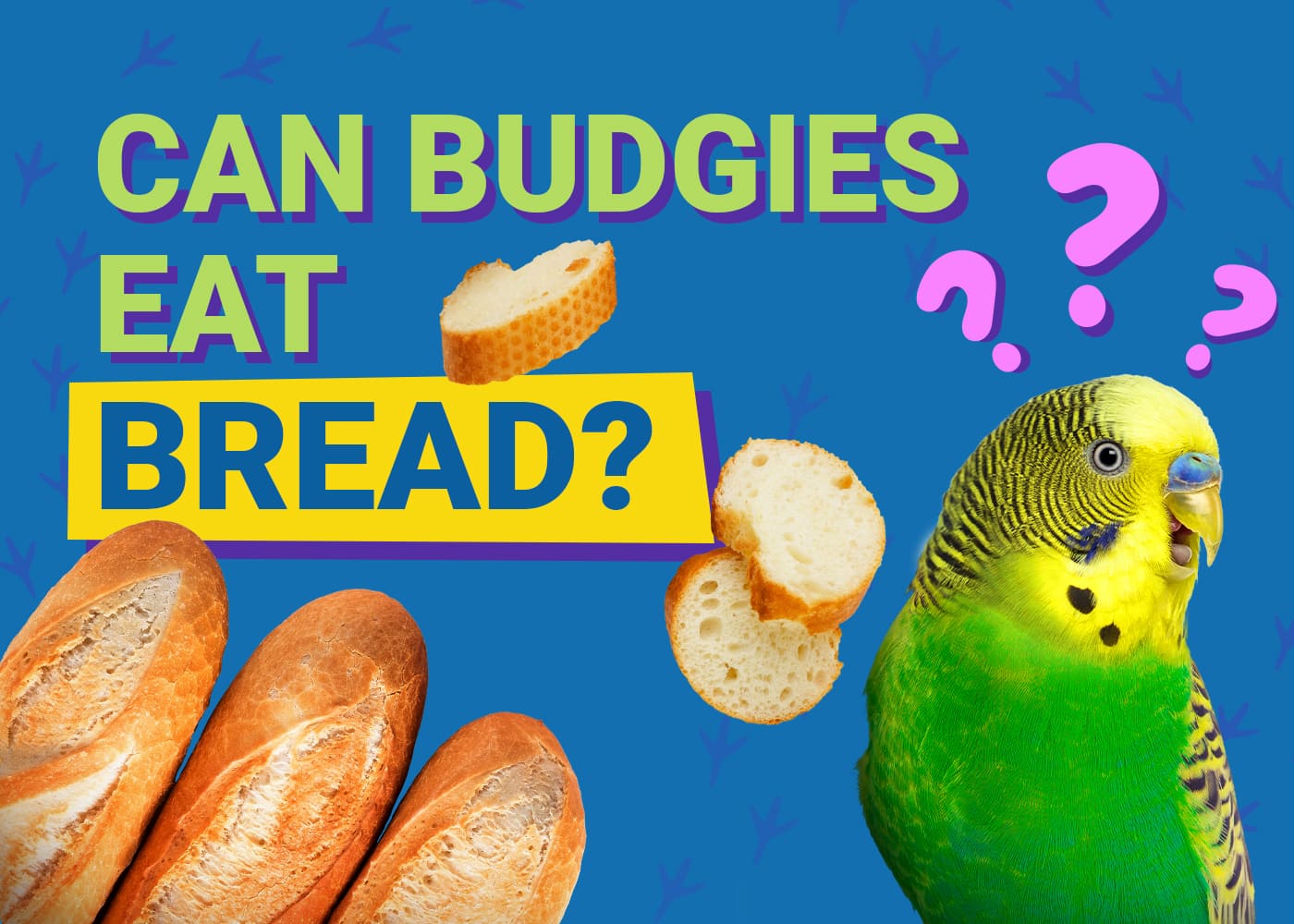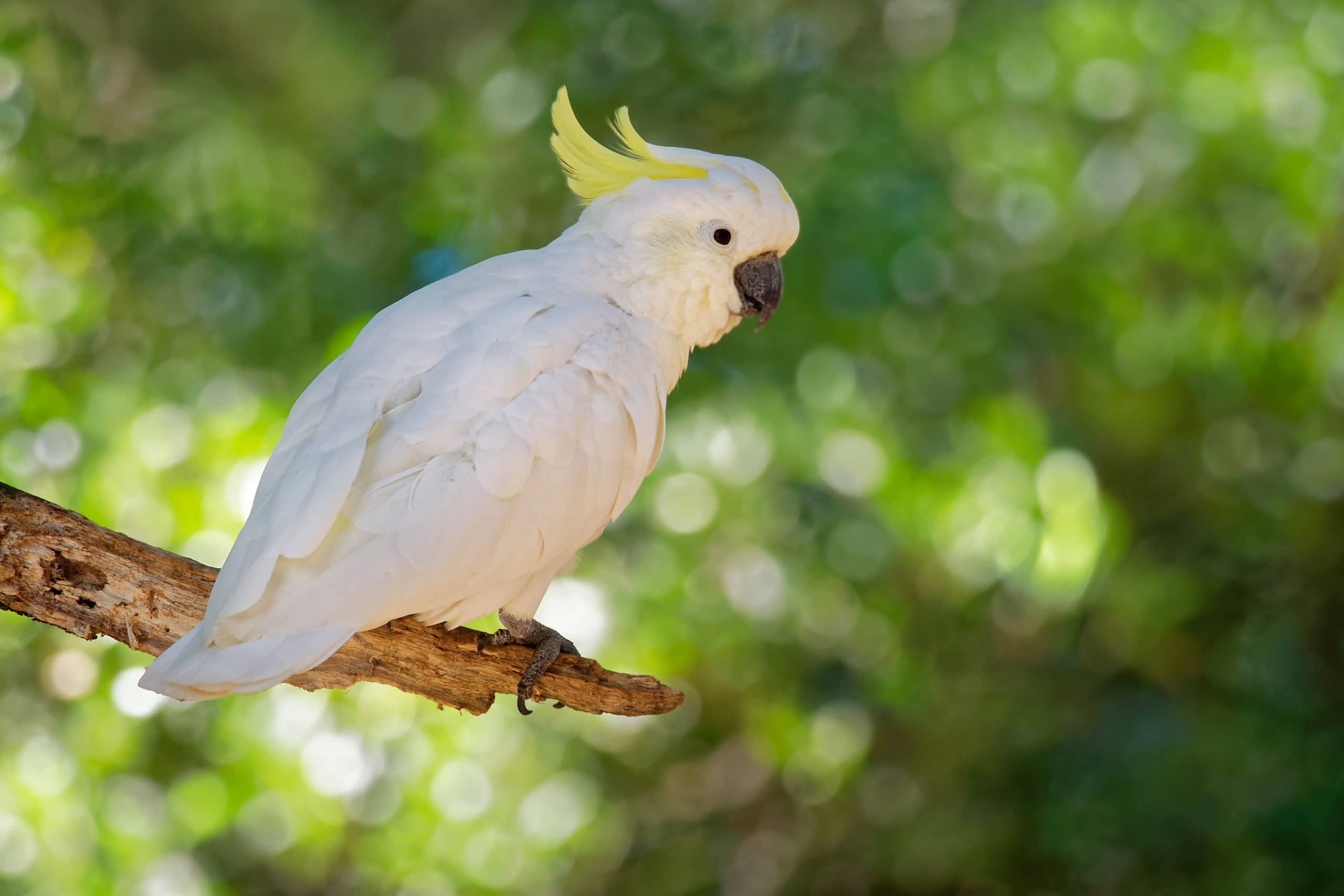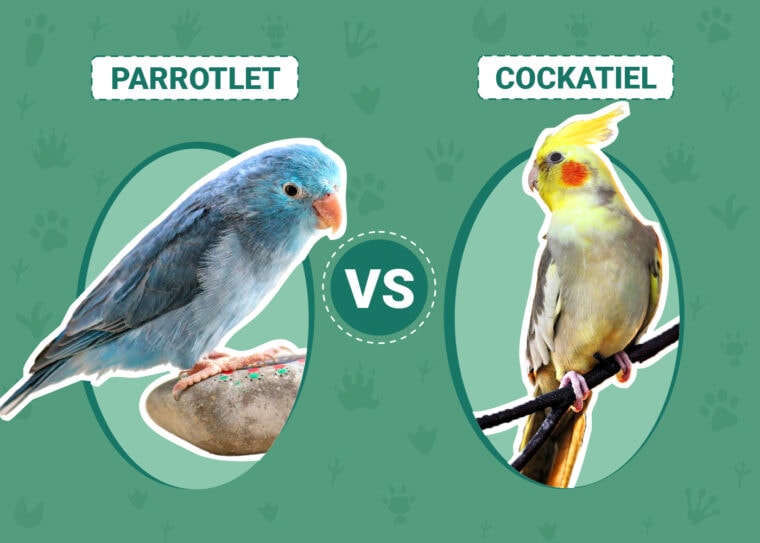
Click to Skip Ahead
Cockatiels and parrotlets are very beautiful birds with many redeeming personality traits. They are very different, however, and neither is perfect for every home. Cockatiels are very friendly and easygoing, making them a great pick for the first-time bird owner, but they produce a lot of dust which can be problematic for asthmatics. Parrotlets are gorgeous and affectionate birds but feisty with a streak of stubbornness that most cockatiels don’t have.
If you’re trying to decide which species will be best for your home and lifestyle, we can help. Read on to learn more about each species to determine which will be the best as your new pet.
Visual Differences
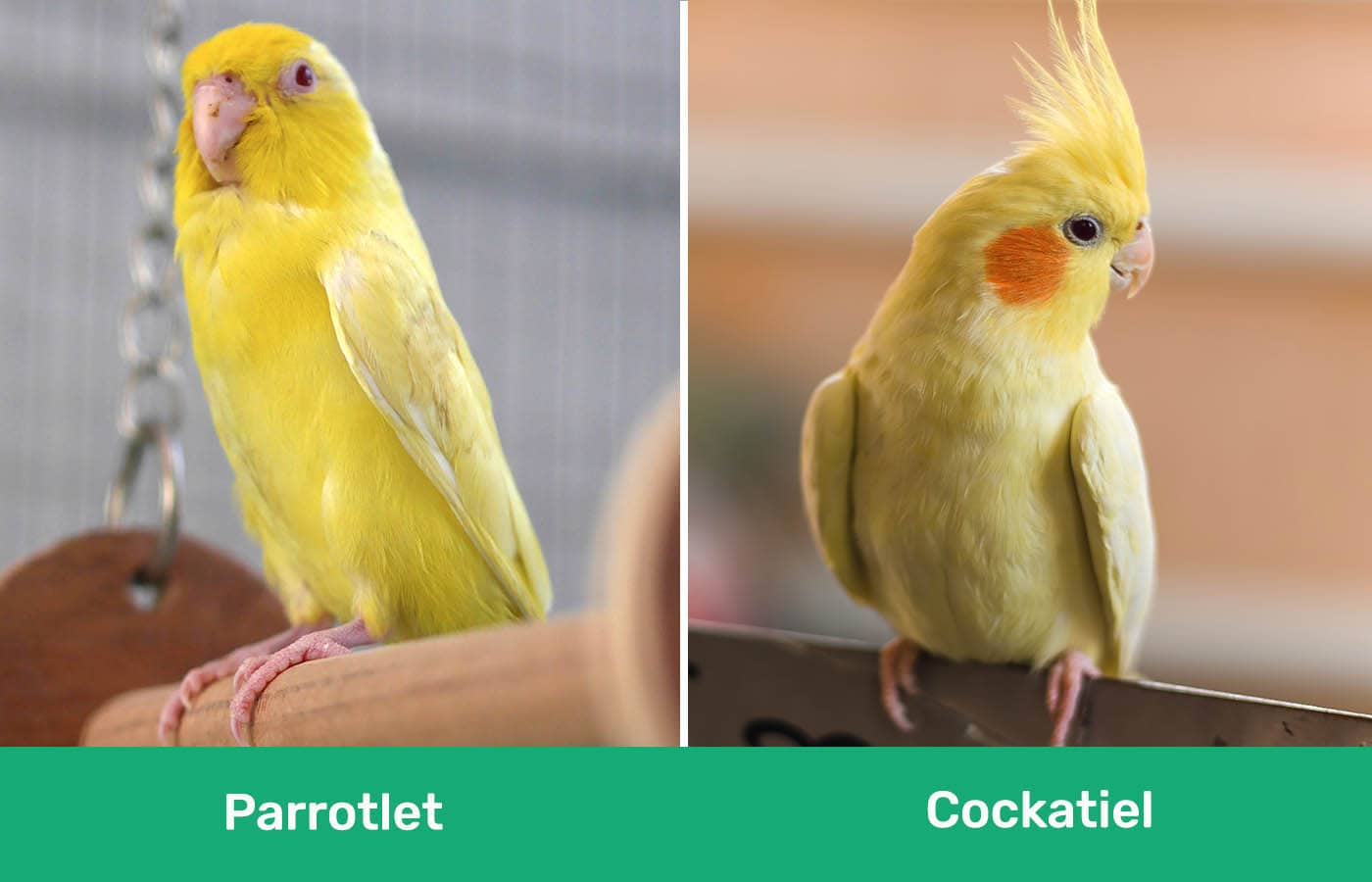
At a Glance
Parrotlet Overview
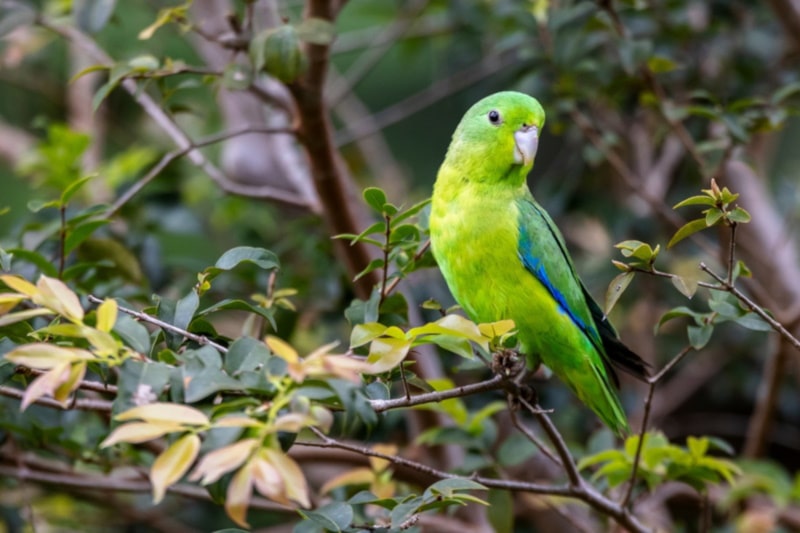
Measuring just five inches in length when they are fully grown, parrotlets are the smallest birds in the parrot family. They are endemic to Middle and South America, where these highly social birds live in flocks of between four and 100 individuals. While there are many species of parrotlets, only two are commonly seen in the pet trade: the Pacific Parrotlet and the Green-Rumped Parrotlet.
Personality
Don’t let the parrotlet’s small size fool you; these tiny birds have huge personalities. They can be very affectionate toward their family members, but socialization is important as this species can get nippy if not tamed soon enough.
Despite their small size, parrotlets are generally fearless of larger animals and have no qualms about challenging other pets or even humans. This is something to remember if you have other household pets. Parrotlets can also become territorial in their cage and may attack anyone encroaching upon their space. This propensity toward biting and the bird’s small and fragile stature may make this species less desirable for families with small children.
They often fare best in a single-bird home. When kept in pairs, one parrotlet often becomes dominant over the other and may become territorial.
Parrotlets can bond intensely with one particular human in their homes if not regularly handled by the other family members. They must be handled and socialized daily to stay tame and affectionate.
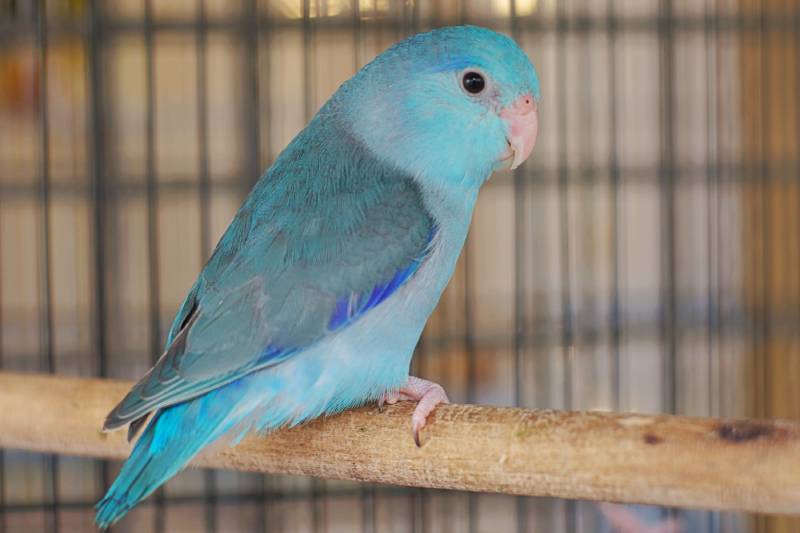
Training
Parrotlets are highly intelligent and active, so they need plenty of opportunities to exercise and play. They can usually keep themselves occupied in their cages, provided they have enough toys and perches to keep them busy. A bored bird is an unhappy bird, so the more toys and opportunities for play you provide, the happier your parrotlet will be. Foraging toys are especially entertaining for this species.
You can train a parrotlet to do tricks, but they won’t be as easy to train as their larger parrot counterparts. They can generally learn commands like “step up”, “step down”, and “kiss” pretty easily.
Parrotlets have similar speaking and whistling capabilities as cockatiels. Some can be taught to talk, while others will never pick up this skill. As with cockatiels, males are more likely to speak than females.
Health & Care
Parrotlets are generally healthy but prone to similar illnesses as other birds.
Before adopting any bird species, you must familiarize yourself with avian husbandry to ensure you know what you’re getting yourself into. For example, did you know birds have extremely sensitive respiratory systems and should not be exposed to strongly scented items like candles, perfumes, and cleaning supplies? Additionally, seemingly innocuous household items like non-stick pans, clothes irons, and waffle irons can release toxic fumes that can kill your bird.
Health conditions like avian gastric yeast may be more common in small bird species like Parrotlets than others. The most common sign of this condition is weight loss, lethargy, diarrhea, and regurgitation.
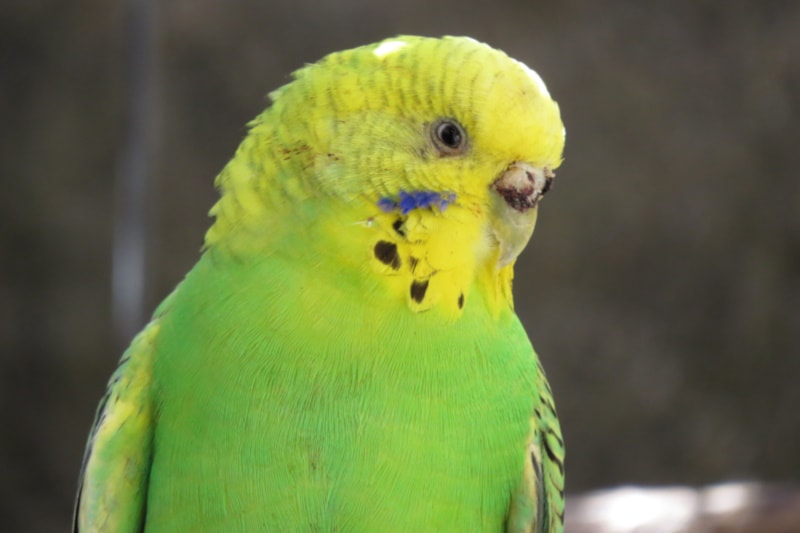
Suitable For:
The parrotlet’s fearless and feisty nature, fragile size, and propensity toward nippiness make them unsuitable for households with young children or other pets. They can live in homes with other birds, but they need to be physically separated from one another for their own safety.
Cockatiel Overview
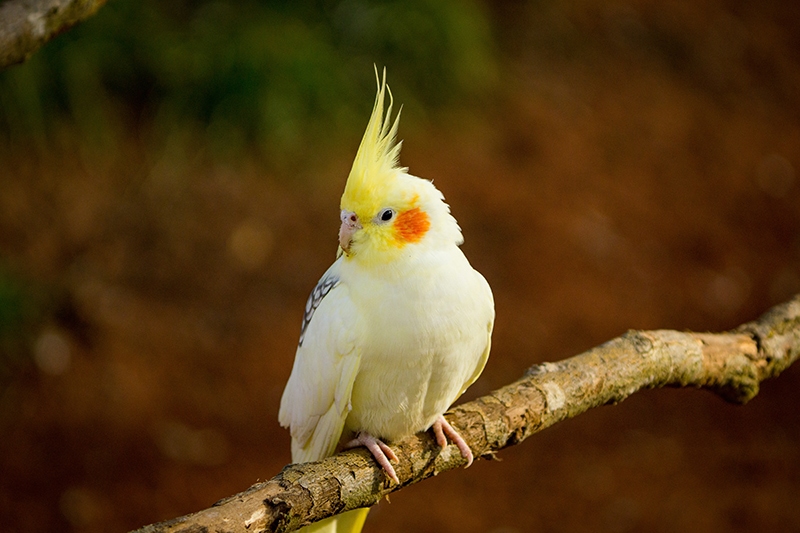
Cockatiels, also known as the weero/weiro are medium-sized parrots endemic to Australia. They are their own branch of the cockatoo family and are the second most popular domesticated bird species after the parakeet. In the wild, cockatiels are typically seen in pairs or small flocks, though sometimes hundreds will gather around a body of water.
Personality
There’s a reason why the cockatiel is the second most common pet bird. These beautiful birds are cuddly, outgoing, and comical. They can be talented whistlers, though this is seen in males more often. Like many other parrot species, cockatiels can talk. Their vocabulary isn’t as extensive as their African Grey or Amazon counterparts, but they can be taught to say simple words or phrases.
Cockatiels are affectionate and gentle and often love being petted and held. They enjoy being near their favorite humans, and tamed cockatiels see their owners as part of their flock. They typically form a tight bond with one particular human but get along well with the rest of the family. They can live with other birds, so they’re great if you already have avian pets and want to add to your flock.
A cockatiel’s crest feathers are like a built-in mood detector. If the feathers are standing straight up, it can mean that the bird is curious or startled. Flattened crest feathers can mean your bird is in defense mode, while slightly held-back feathers generally mean he’s relaxed.

Training
Cockatiels are highly intelligent birds that can learn many tricks and vocalizations. As previously mentioned, male cockatiels are more inclined to whistle and speak than females.
Cockatiels can learn tricks like high fives, stepping up and down, wing flexing, and more. You can even teach your bird how to play games with you, like birdie basketball or peek-a-boo.
Health & Care
While cockatiels are generally healthy, they can be prone to certain conditions.
According to VCA Hospitals, cockatiels are often afflicted with respiratory diseases stemming from the Chlamydophila psittaci bacteria. They may also be prone to internal parasites like Giardi and gastrointestinal yeast infections. As with other bird species, cockatiels may be prone to egg-binding, conjunctivitis, and night frights.
Like their Cockatoo and African Gray cousins, cockatiels create an abundance of dust. The dust is a result of their constant feather preening. It can be harmful if inhaled and may be an issue for people with respiratory issues, such as asthma.
Before adopting a cockatiel, you must familiarize yourself with avian husbandry, as they need a specific environment to thrive.

Suitable For:
Cockatiels are gentle and friendly birds well-suited for households with children. They can get along well with several other bird species and can even live in an aviary alongside them. Cockatiels make great companions as they get along well with the entire family, though they tend to form stronger bonds with one person in particular. Because they are such a dusty species, they may not be suitable for folks with respiratory issues.
Which Breed Is Right for You?
Cockatiels and parrotlets have a lot of similarities. They’re both beautiful birds with many redeeming personality traits. Both species can learn to talk and whistle, especially if they are males. They tend to form tight bonds with one particular family member.
The two species have their differences, though. Parrotlets are much smaller than cockatiels and tend to live much longer. They are typically more independent and can spend time alone in their cages, provided they have enough toys to entertain them. Cockatiels are much more social and need to spend daily time with their owners. They are typically much more friendly and easygoing than parrotlets, who often have a major attitude.
Cockatiels and parrotlets can both make great pets in the right household. Parrotlets do better in homes with no other pets or young children, while cockatiels can live harmoniously alongside other birds and are often well-suited for homes with children. Parrotlets are best for bird owners who like a more hands-off approach, as they’re more independent than their social cockatiel counterparts.
- Related Read: What Other Birds Can Parrotlets Live Together With?
Featured Image Credit: (L) JTKP, Shutterstock | (R) Kirandeep Walia, Shutterstock



